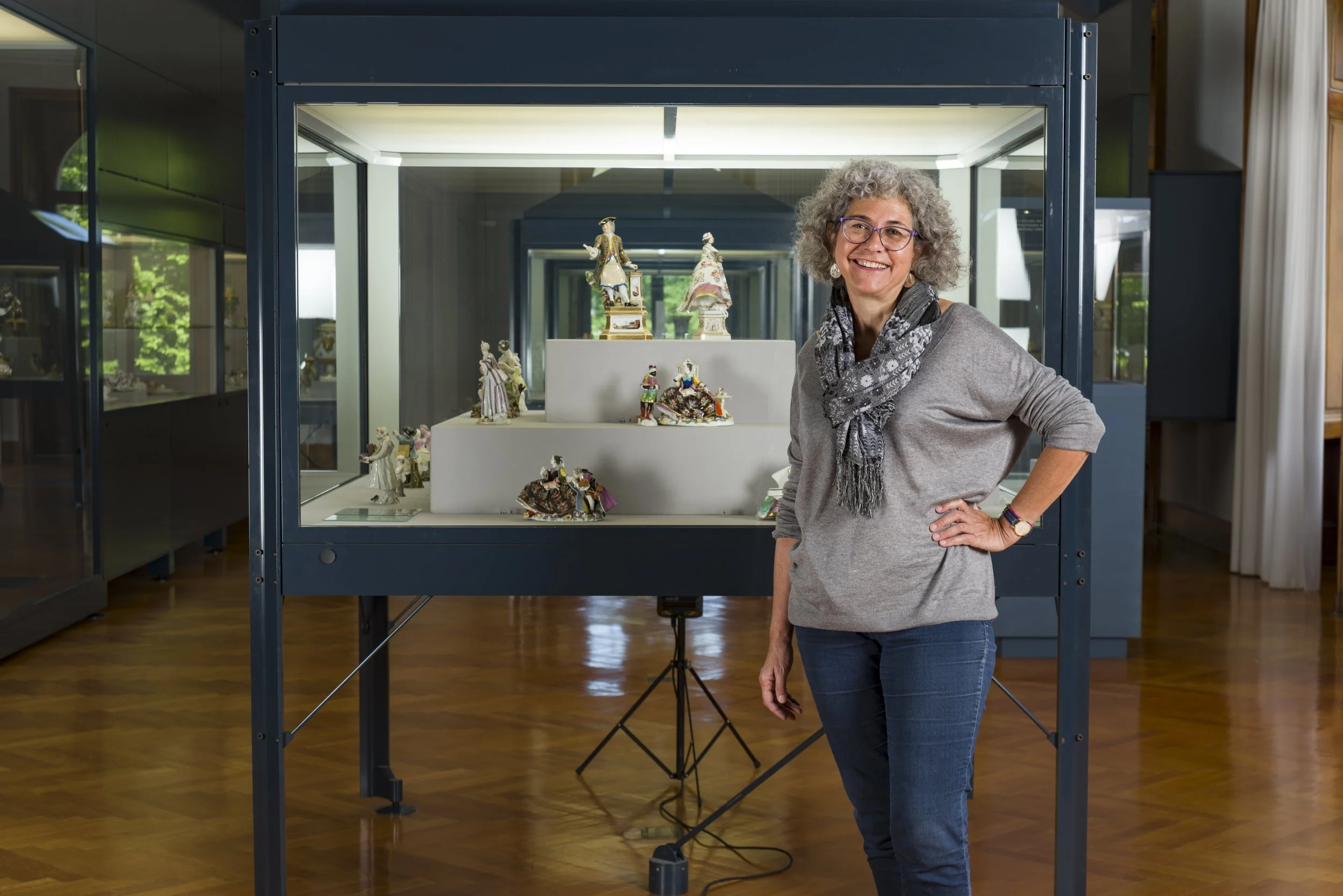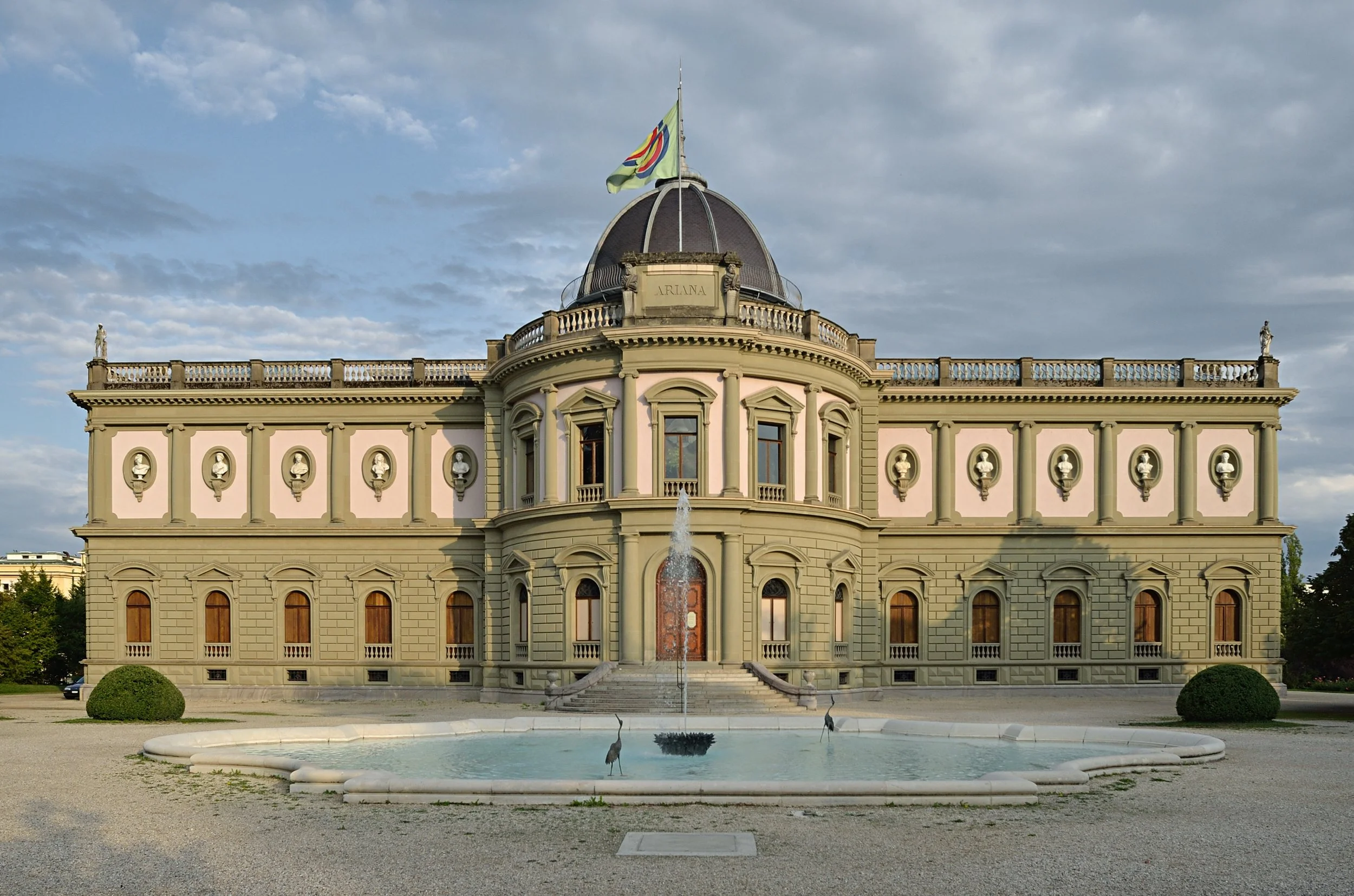Anne-Claire Schumacher
Fire, Gods and Broken Bowls: Behind the Scenes at the Ariana Museum
Beautiful ceramics can connect us to the earth and our history. Anne-Claire Schumacher, the chief curator of Switzerland’s only museum of ceramics and glass, explains how.
Almost any piece of old pottery or glass becomes fascinating as soon as you become curious about its story, believes Anne-Claire Schumacher. Her curiosity is always aroused by objects in which you can still see evidence of a living human hand, itself perhaps long since turned to dust: the trace of a brush, the imprint of a fingertip.
Schumacher has been the chief curator of the Ariana Museum in Geneva since 2010. It’s the only museum of ceramics and glass in Switzerland, and one of the few museums of its kind without a direct link to a factory or a production site. It also serves as the headquarters of the International Academy of Ceramics, a community representing specialists at the highest level.
After doing a master’s degree in art history and Chinese language and civilisation, Schumacher spent a few years guiding cultural trips to China and Central Asia. In 1995, she became an assistant curator of the Ariana Museum. She quickly discovered that a day in the life of a museum curator is spent constantly on the move, from organising an exhibition on contemporary ceramics to researching Chinese porcelain of the Kangxi period, or meeting collectors.
“Every exhibition is a real adventure,” she says. “It’s an exciting job. Despite all these years spent in this museum, I never get bored; each project is different and there is still so much to learn.”
“Every exhibition is a real adventure”
An impressive building with beautiful gardens, the museum is a work of art itself. Its founder, Gustave Revilliod, built it to display his own extensive collections, naming it ‘Ariana’ after his late mother Ariane De la Rive. Reminiscent of a palace, it’s a glorious monument to 19th-century eclecticism, with painted ceilings by the Genevan artist Frédéric Dufaux, sculptures by the Italian sculptor Luigi Guglielmi and impressive stained glass. It first opened its doors to the public in 1884, and today its mission remains the same: to enhance Geneva’s rich cultural life with exhibitions showcasing historical, contemporary and local displays of ceramics and glass.
For the curator of such a renowned museum, forming relationships with artists, collectors, gallerists and art historians is essential. One of the most fascinating aspects of this role for Schumacher is the chance to work with prominent artists such as Jacques Kaufmann and Gundi Dietz while arranging exhibitions. Schumacher asserts that ceramics and glass are not just sub-categories of painting and sculpture but deserve respect as art forms in their own right.
For Schumacher, ceramics have a strong connection to the earth and the four elements, and this, she says, is why many artists remain so interested in them. Ceramics have an organic significance in contemporary society, where lives are led in cities no longer connected with nature.
Her view is perhaps best illustrated by Women potters of Africa, a temporary exhibition at the Ariana of a unique collection compiled by eleven European ceramicists who went to West Africa to watch experienced local potters at work.
The ceramicists brought back large, everyday pots used to store water, beer, wine or cereals. This utilitarian pottery, produced primarily by women and rarely seen in museum collections, is also an important form of art.
One of the ceramicists, Camille Virot, calls this view of ceramics “a total art form: everything gets kneaded together —earth, water, the body, tradition, everyday life, fire, broken bowls, and gods.”
“A piece of art worth being exhibited in a museum is one that radiates by itself when put on display,” says Schumacher. These works don’t need elaborate comments to persuade the public about their importance. But everything has its place. Even the most modest piece can convey stories from history that would otherwise be lost.
The exhibition Speaking Plates, for example, showcased the museum’s collection of 19th-century French and Swiss creamware printed with amusing scenes. A complete set of twelve plates featuring the World Fair in Paris of 1889 produced by Keller & Guérin factory in France is among its highlights. In one, the illustrator satirises the reactions of French and English exhibition visitors while meeting people from other ethnic groups. A group of women are shown exclaiming: “The sun must beat down hard on that awful country to tan ’em like that... it’s got such handsome men!”
The chief curator’s primary responsibilities are ensuring that the museum’s collection is stored in optimal conditions, is scientifically studied and is presented to the public in the most coherent way possible. Along with Isabelle Naef Galuba, the museum’s director, Schumacher plans the exhibition programme four years ahead. It often takes several years to study a concept, develop it and prepare the publication to accompany the exhibition before it opens its doors.
“A piece of art worth being exhibited in a museum is one that radiates by itself when put on display”
The diverse exhibition programme alternates between historical and contemporary subjects, ceramics and glass, art pieces from the museum’s own collections and also borrowed ones, in both small and major exhibitions.
Private or institutional donors are key to increasing the museum’s collections, as the museum has no acquisition budget. Donations vary from single objects to extraordinary collections, such as Clare van Beusekom-Hamburger’s donation of 16-18th century Chinese, Dutch and French porcelain and Delft faience (fine, tin-glazed pottery), and Frank Nievergelt’s stunning contemporary ceramics collection.
For Schumacher, however, the biggest challenge is making the museum accessible for everyone. She does this partly through cultural mediation activities targeted at different audiences, from migrants to the visually impaired, and workshops for children. One cultural partnership the museum fosters is with InterContinental Geneva, which displays 10 works from the Ariana Museum on a rotating basis, with a new 10-piece exhibit debuting every six months. Guests can explore the ceramic and glass works without leaving the hotel, and the museum is able to reach a new audience.
From the artist to the collector to the viewer, a human connection is always present with every object in her museum, and that is what fascinates Schumacher the most.
Writer: Rania Margari
Published: May 2018
The Ariana Museum, Geneva. Photo: Guillaume Fürst
Photo: Ariana Museum


